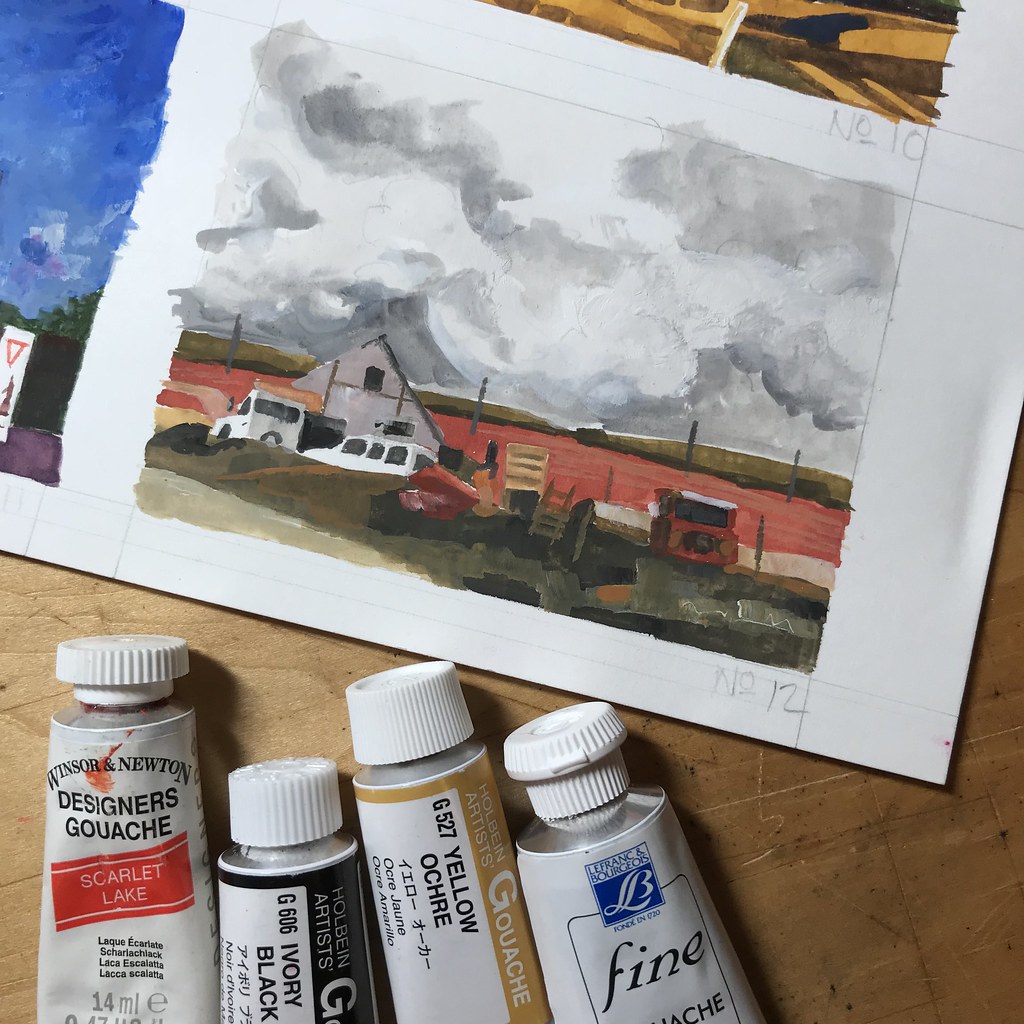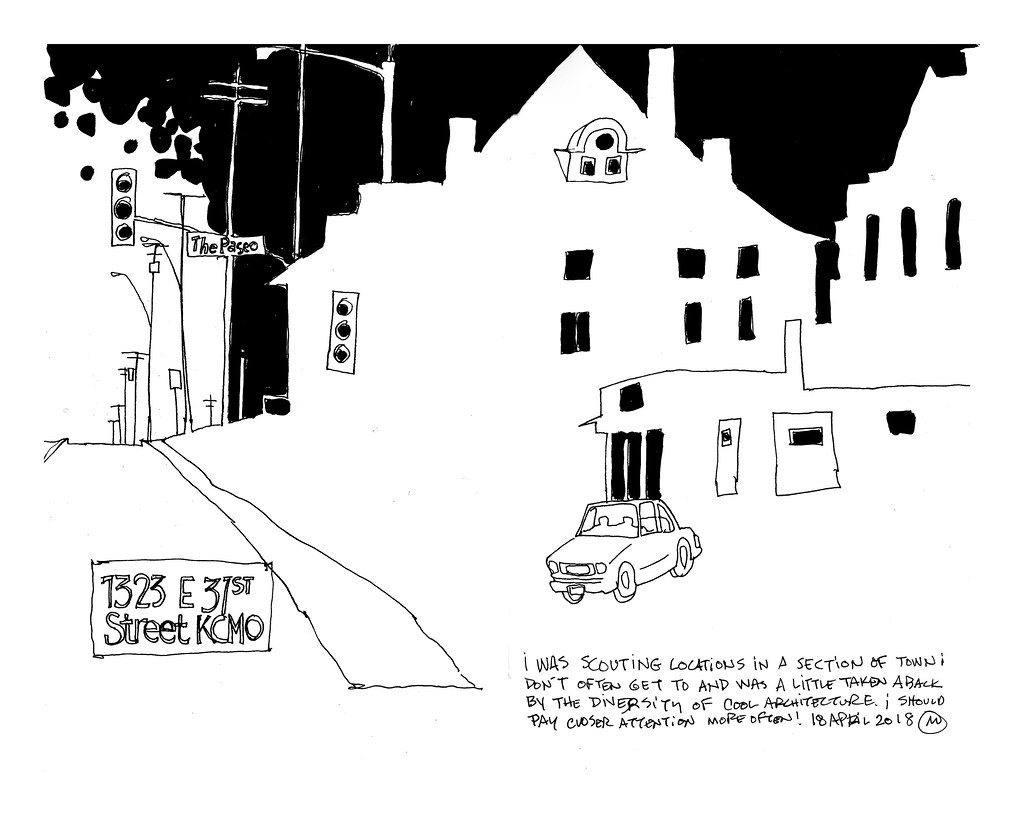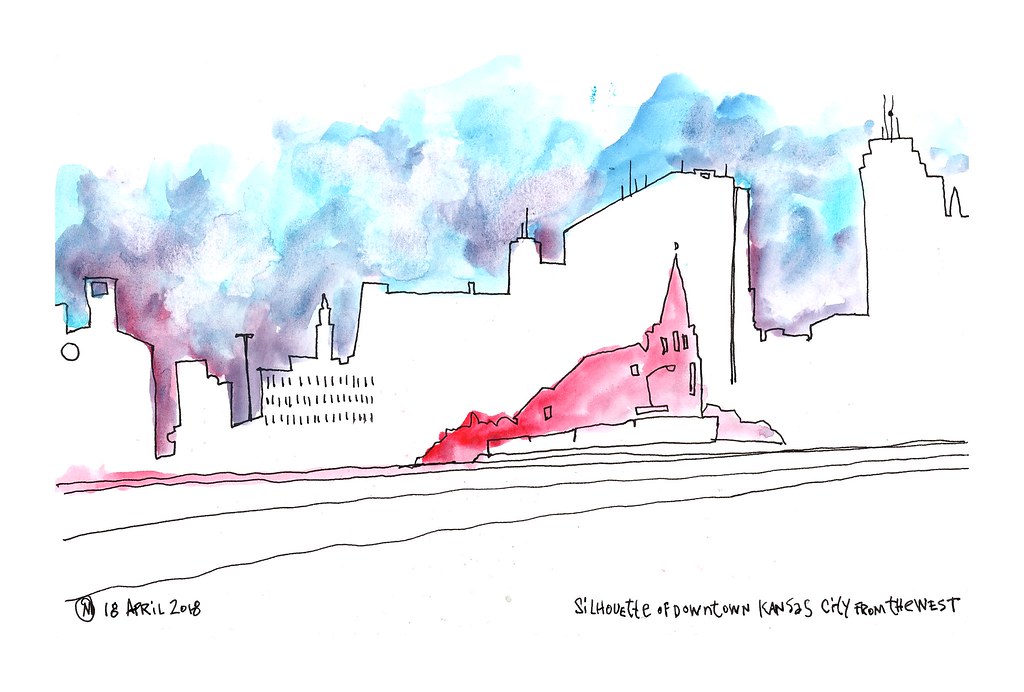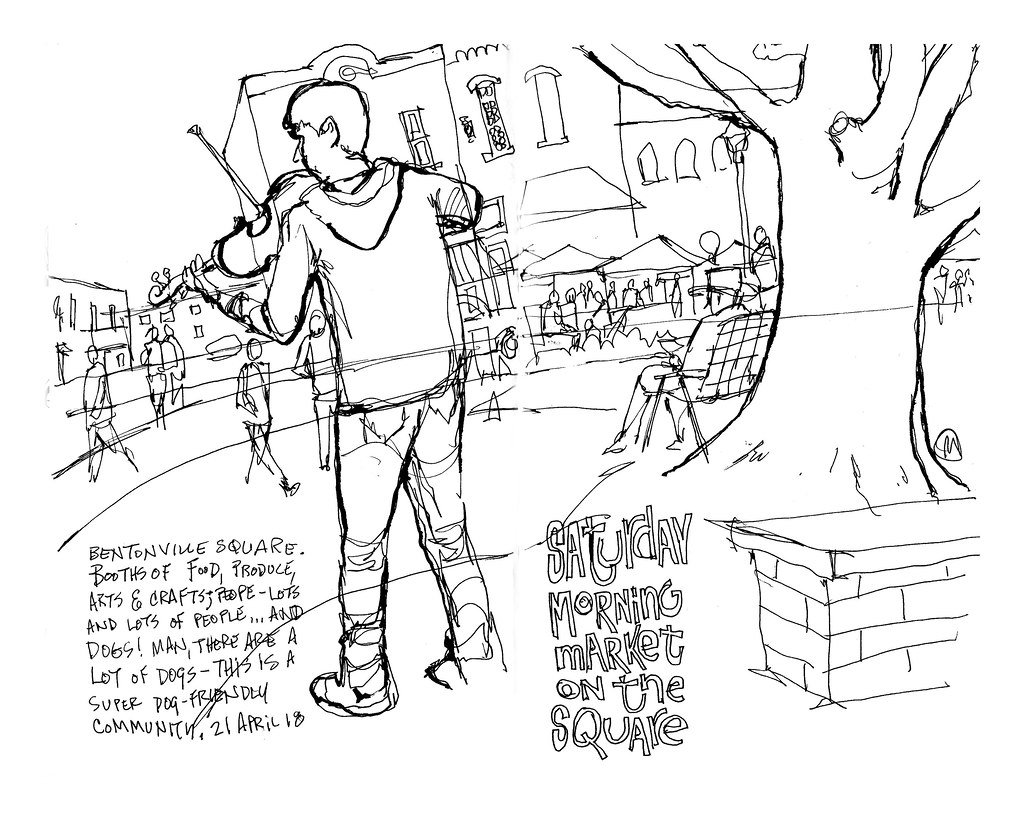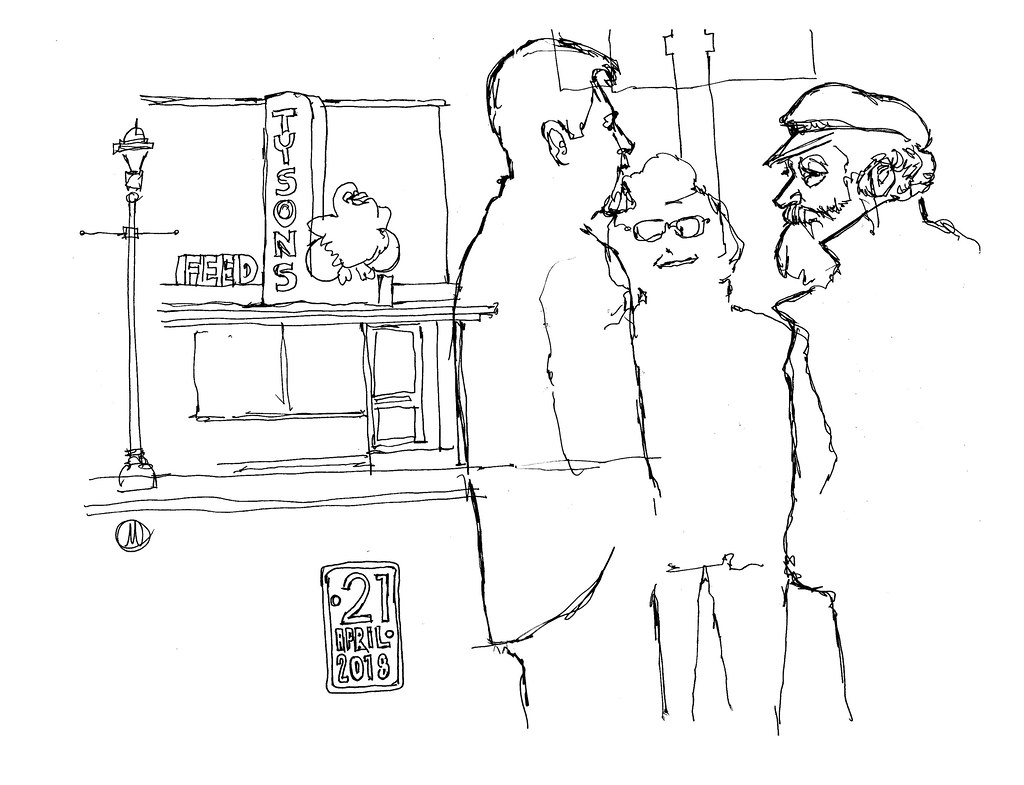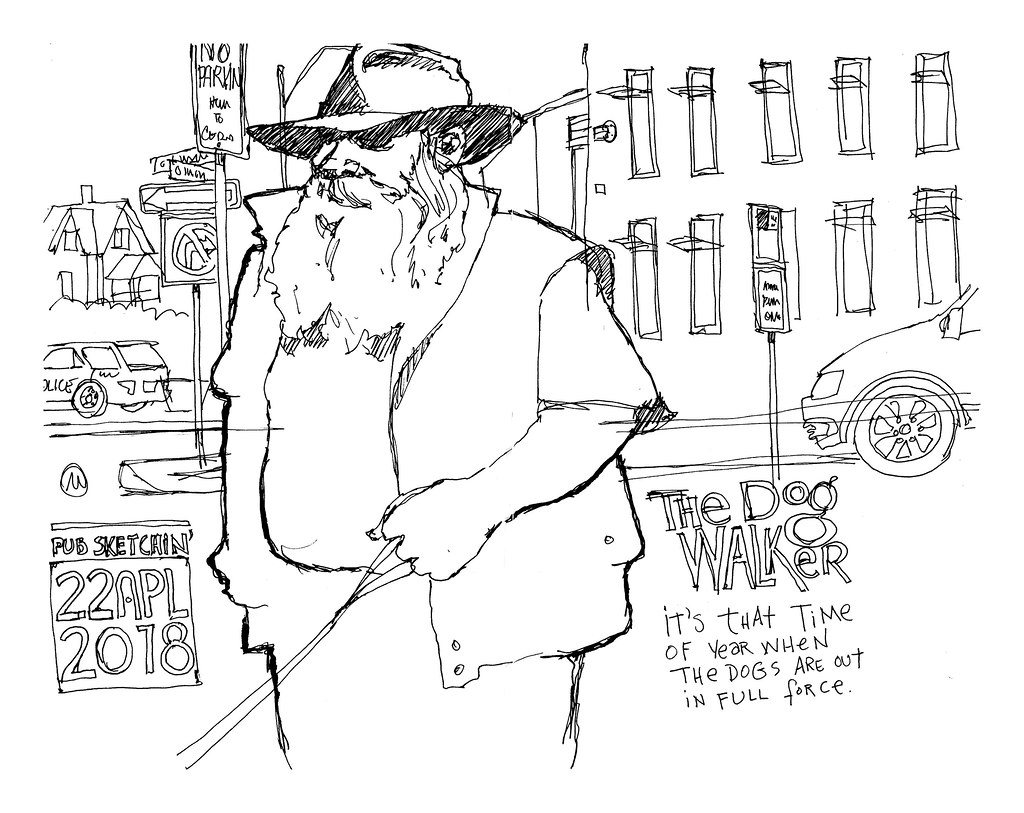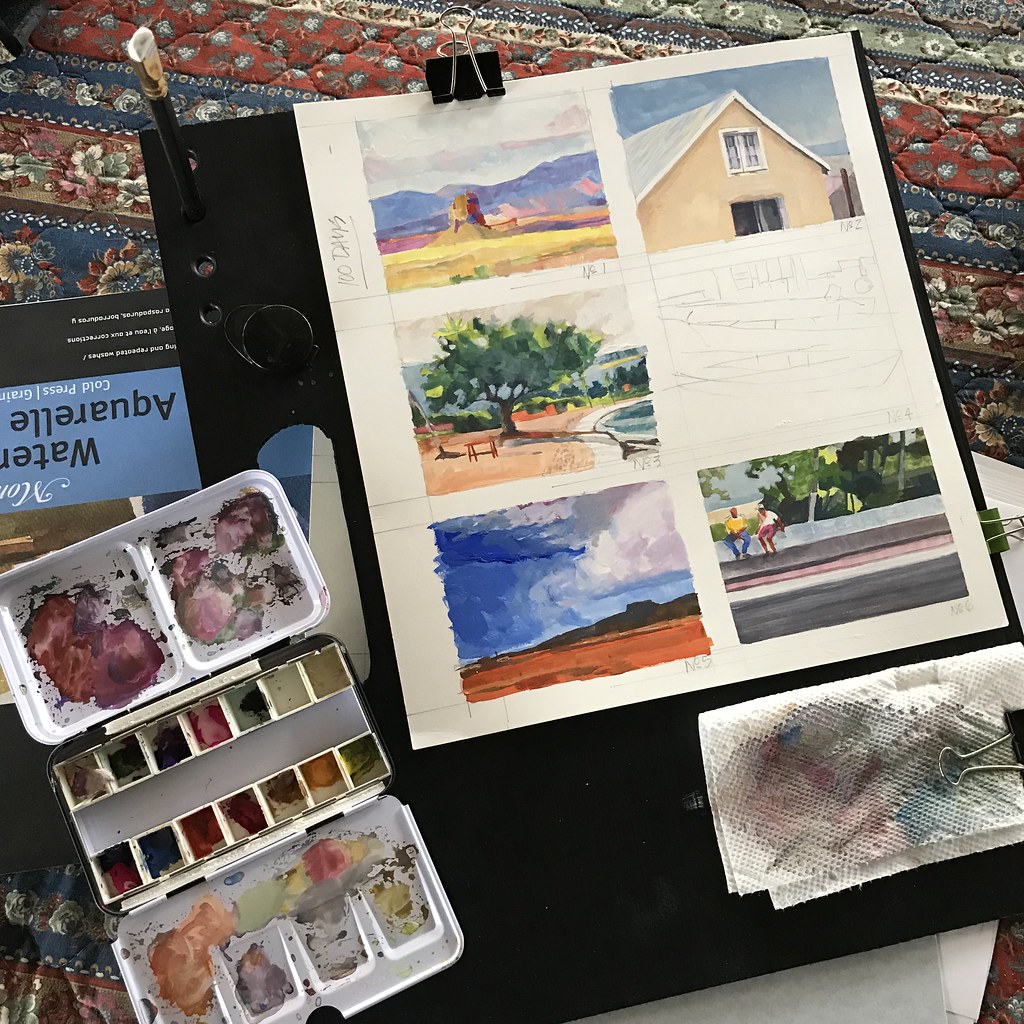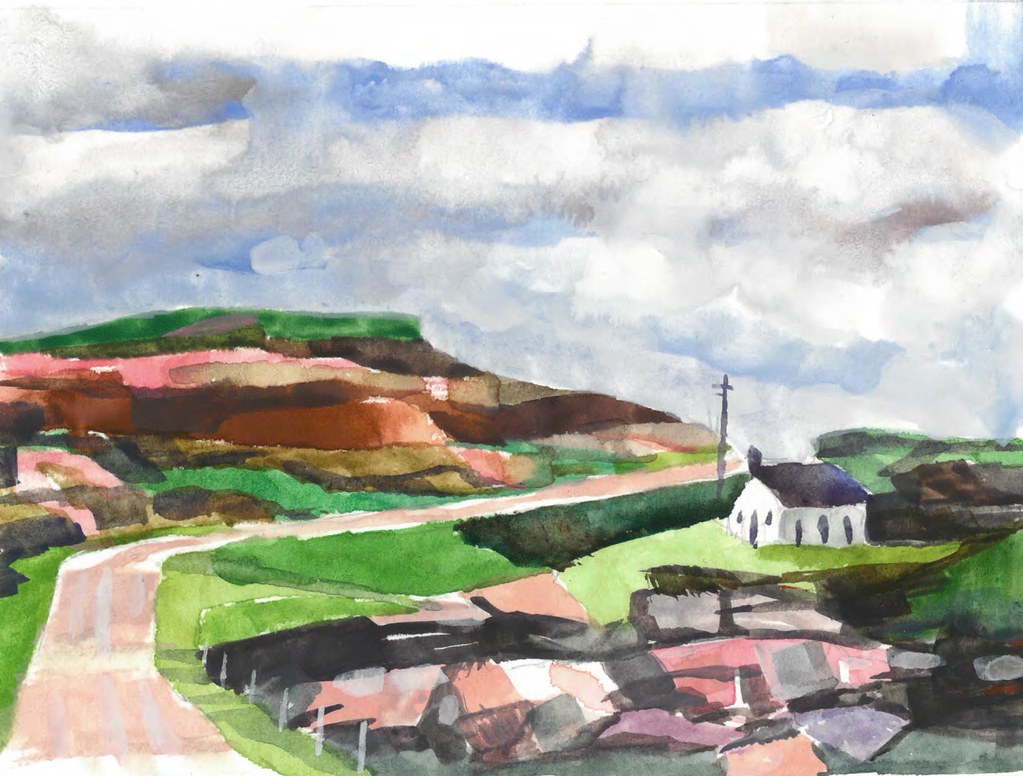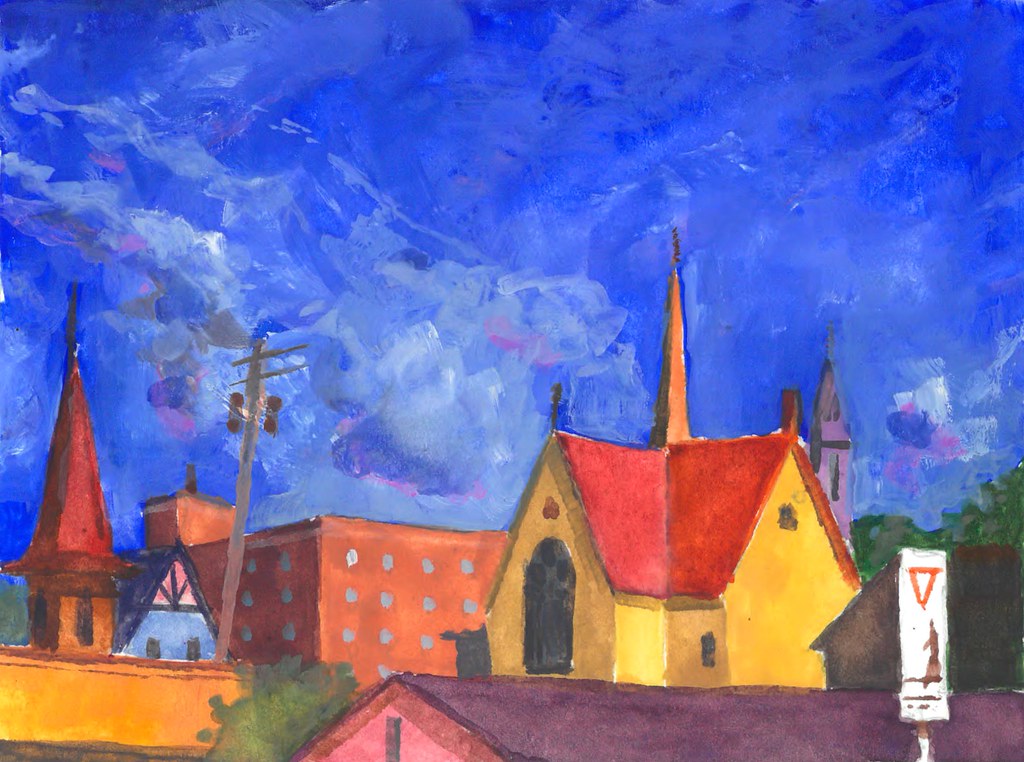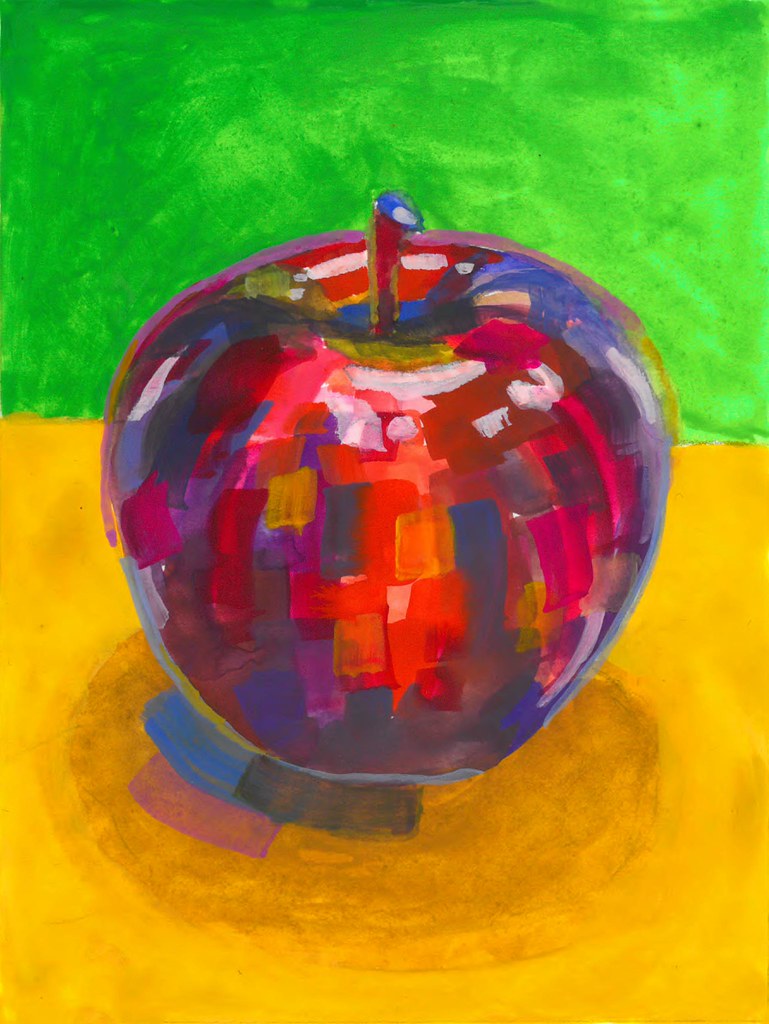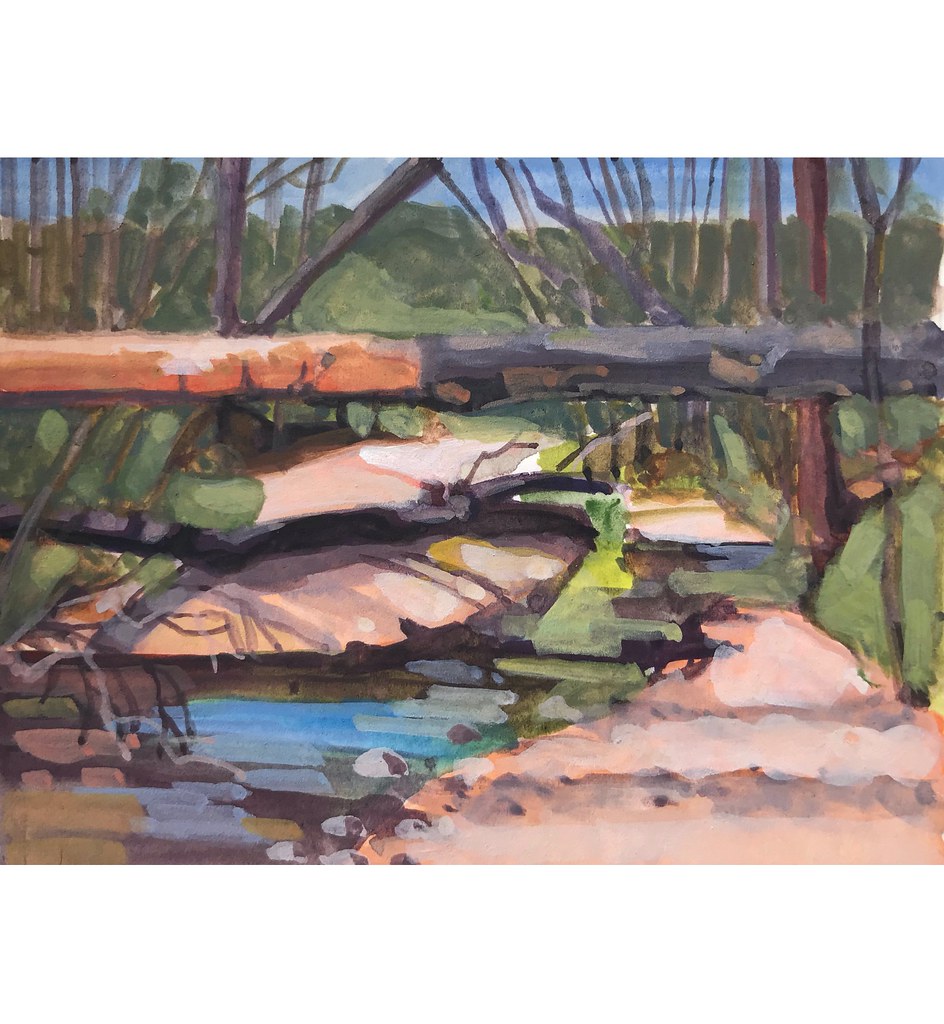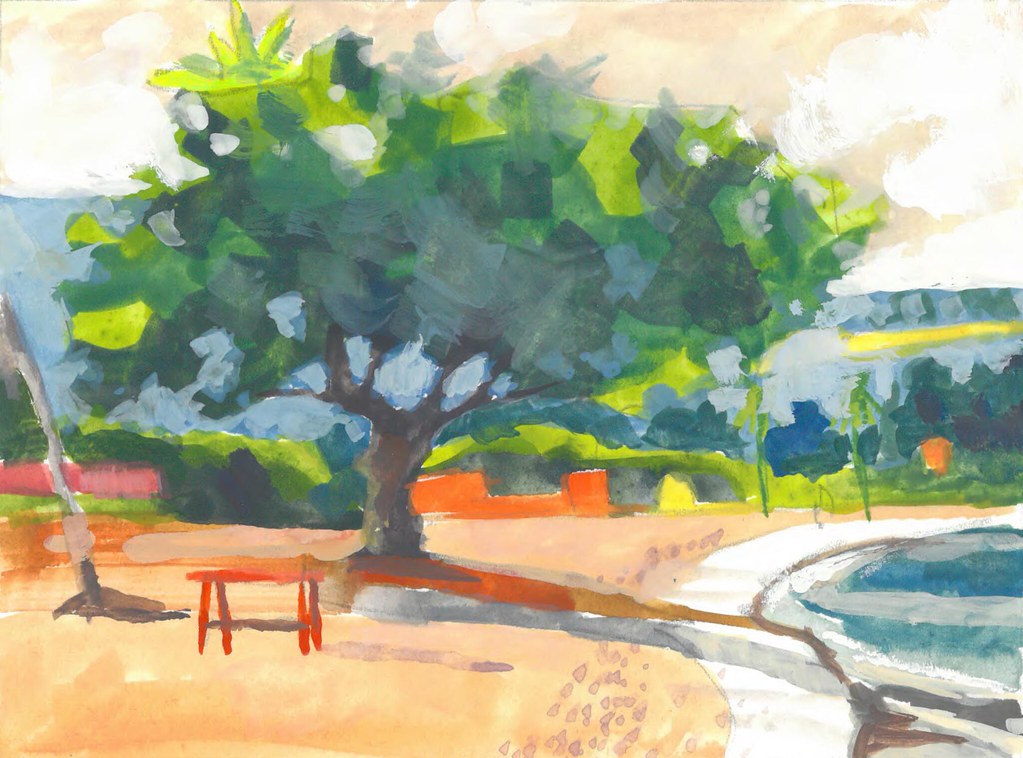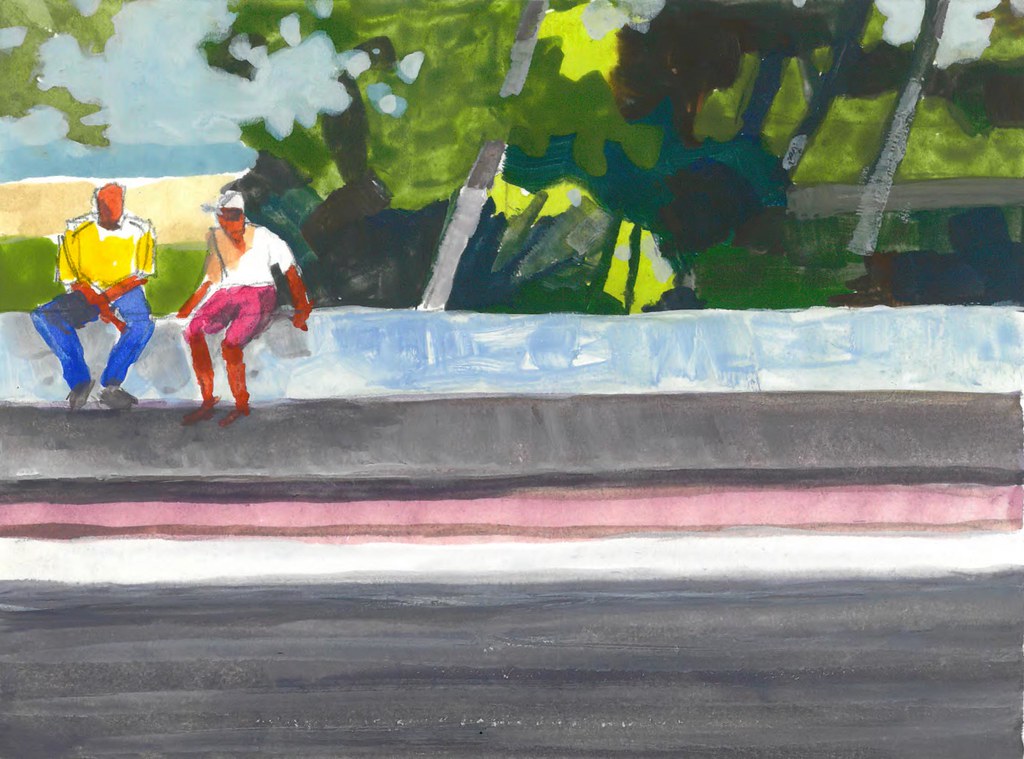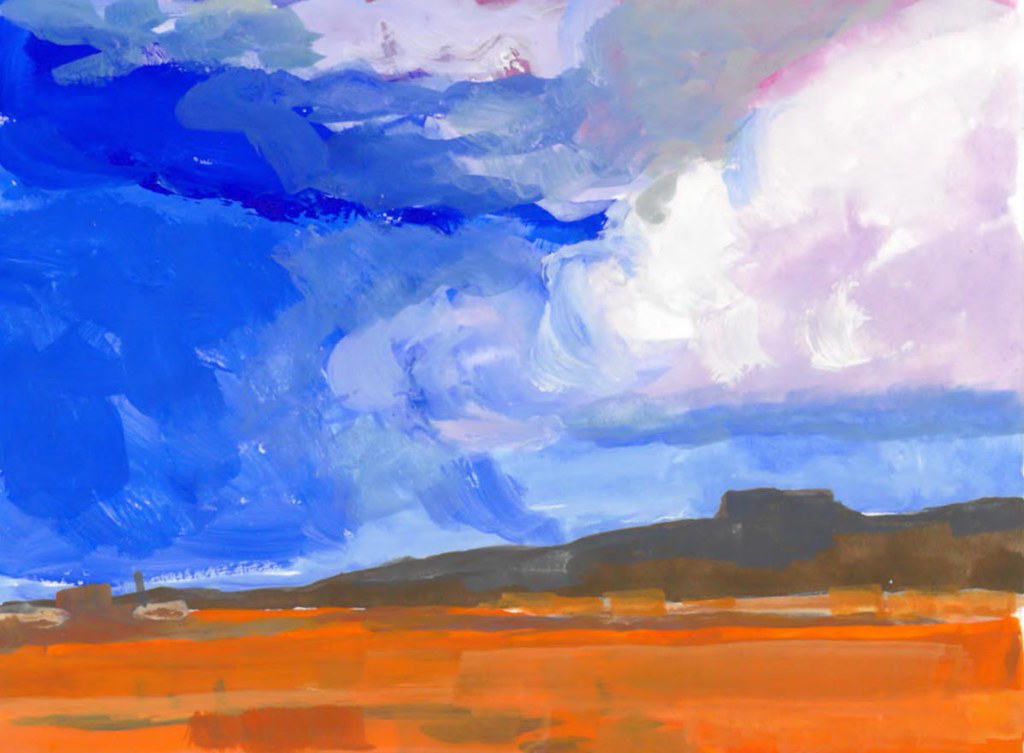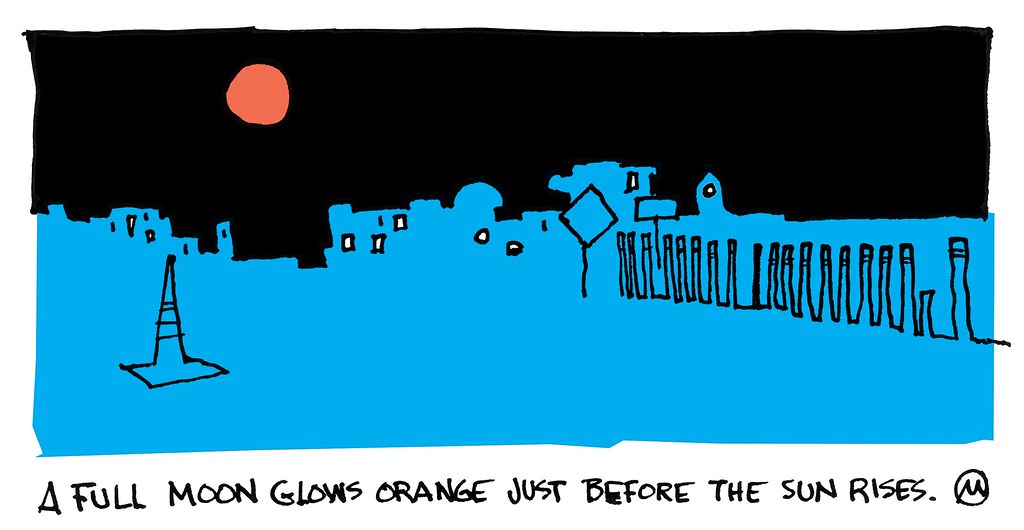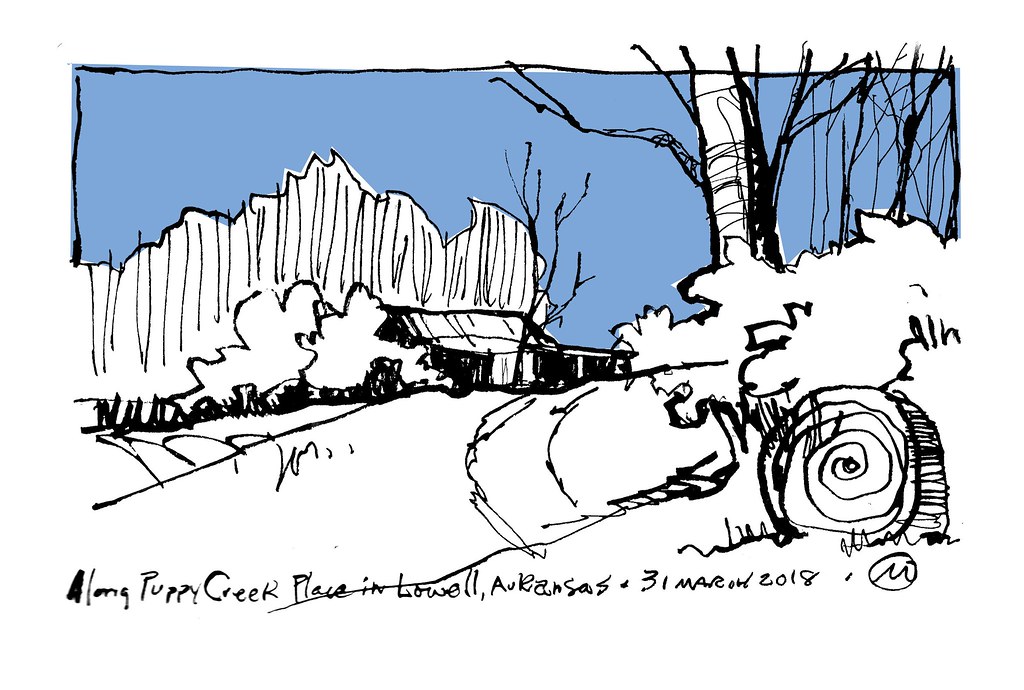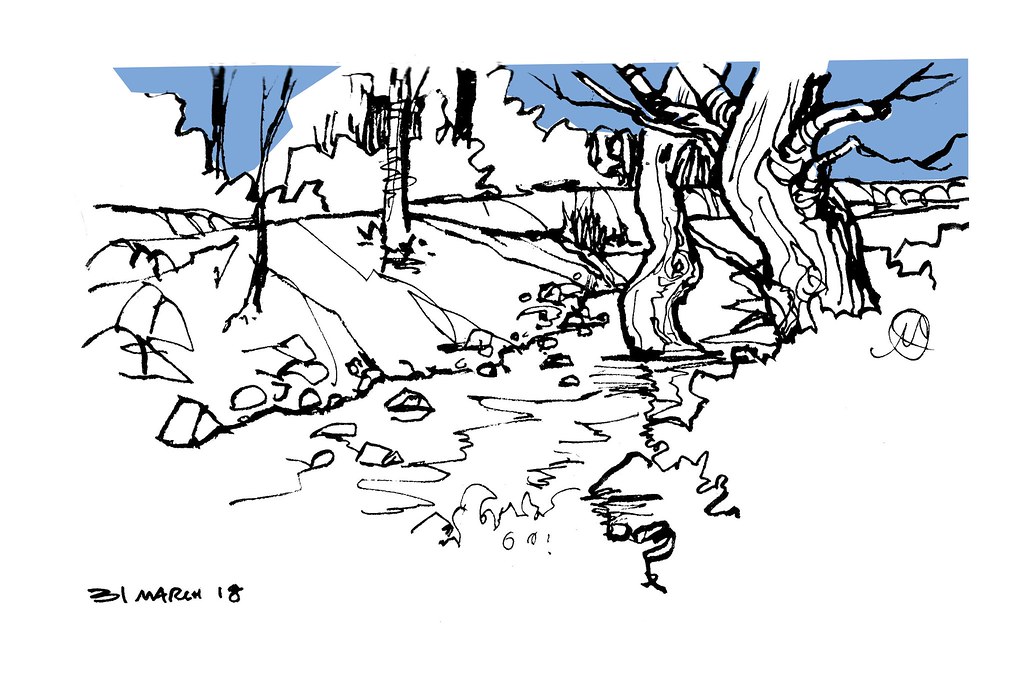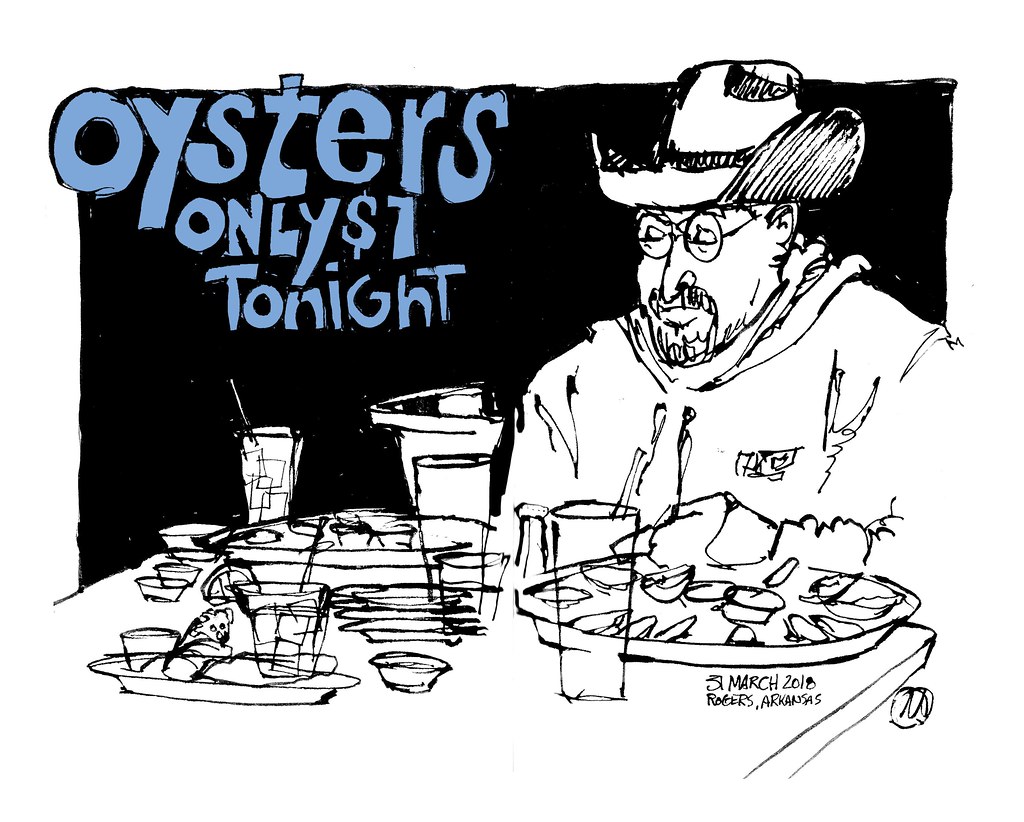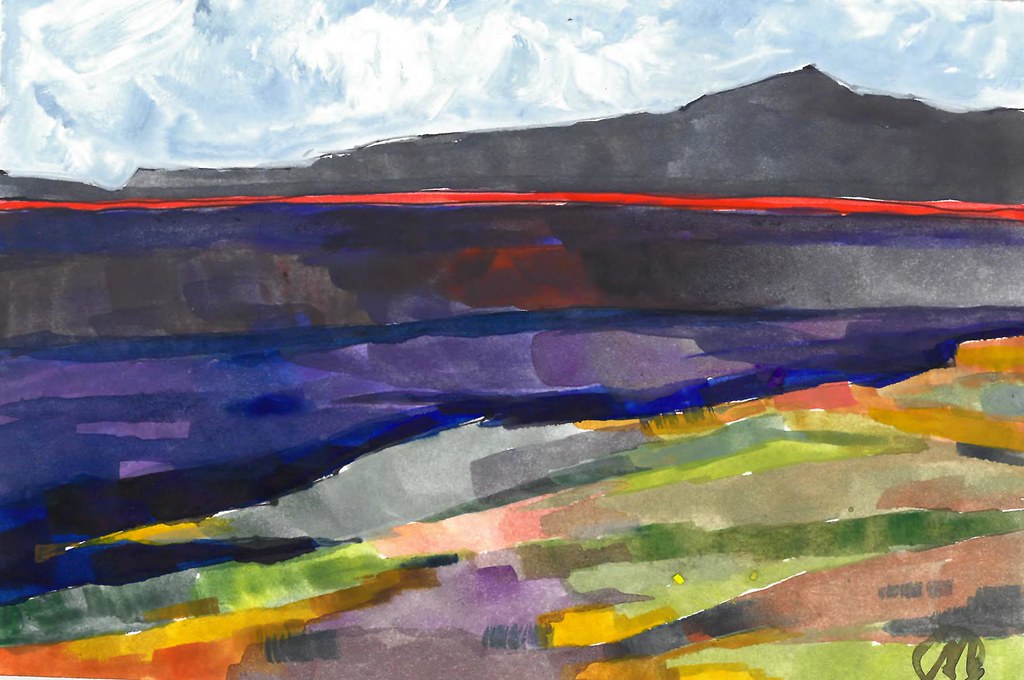
7 April, 2018. I was recently asked to contribute a small sketch to an exhibition. I get a lot of requests of this nature, so the invitation in and of itself wasn’t remarkable. What was unusual was that the request came from a student in a small, rural high school, a young lady interested in the role art plays in communities such as hers. Having graduated from a small town high school myself, it got me thinking.
The small sketch I sent to her was painted on a 4 x 6 inch piece of illustration board that she provided to each exhibitor. I explained that mine was a quick sketch using gouache to represent a rural landscape I’d recently encountered. I’m an avid cyclist; it’s not unusual for me to take off with no set destination in mind, only to discover hours later that I’m on a paved country road sixty miles from home. I carry sketching supplies with me when I ride, and my little sketch began life as a quickly scribbled pen drawing of a recently burnt field. I’m sure this practice is common in other places as well – in the Midwest, one will often come upon a soot-blackened field in the early Spring months: one good rain later, and the field turns into a blanket of fresh greens. My colors were added later on: I built up a couple of layers of loosely blocked in hues and explained to her that I was using gouache, which is an opaque watercolor media. My work is usually very loose with a lively approach to line work, but I like to play and experiment. This sketch is an example of that sort of artistic play and reinterpretation of a scene.
Rural communities. I think the internet and social media make it much easier today for artists in rural communities to be part of the “outside world.” About a year ago I began to interview artists from around the world for Drawing Attention, the official magazine of Urban Sketchers. Despite what the name may imply with the word “urban” in the title, many of the artists I write about live and work in very remote areas. Facebook, Instagram, Flickr, Etsy – among many other platforms – provide a means for artists to “shrink” the world down to a manageable size. I’ve often wondered if nineteenth century artists might not have been very envious of our twenty-first century connectivity!
Artist recognition in rural areas. Many art makers seek out validation. It’s tough to create art; we often question ourselves and our abilities, and young artists in particular need encouragement – confirmation that what we do is worth the act of doing it. I was asked about artist recognition as it relates to rural art makers. The question seemed to imply that the environment might be a more limited one in terms of artist recognition, and I suppose there may be truth in that presumption. I responded that artists living in rural areas might consider engaging in public art projects in order to generate visibility. In my home of Liberty, Missouri the community recently hired a mural artist from someplace in Iowa to create a very large artwork on the town square. It occurred to me that community organizations might be a key: community theatre provides a valid means of artistic expression for those who wish to perform, as does community orchestras and choirs – why not create a sketching group? Making art doesn’t have to be limited to the “professionals” (whatever that actually means these days.) Community engagement could mean that everyone is invited to participate, regardless of one’s ability.
I come from a rural community of about 2,000 residents, Slater, Missouri. In a place this small, if you can draw you are automatically identified as “the artist.” My pathway in the 1970’s was to leave town, go to university, and begin a career as a designer and illustrator. Finding an audience was easy for me: I learned to talk intelligently, to listen to my client, and to logically solve the visual problems that confronted them in their advertising or publishing needs. When you can meet those conditions, your audience tends to find you. That also eventually led to me understanding that others could benefit from what I learned. Thus, I moved from practitioner to teacher nearly twenty years ago, but my personal accomplishments came about after “leaving for the big city.” It seems to me that some feel this is the only legitimate pathway toward artist recognition.
I’m not totally on board with the idea that “recognition” should be the end goal for an artist. I feel that an artist has a need to communicate and share. If one’s message resonates, recognition might follow. But I am aware of many people who have achieved recognition, yet accomplished very little. Those priorities seem to be switched to me: accomplish first. Is making art your vocation or your avocation? Do you make art to make a living? Or to make life more enjoyable? In the end, I often feel like my response to questions raises even more questions than I answer.
And maybe that’s what it means to be an art maker, regardless of where it is you happen to call home.

